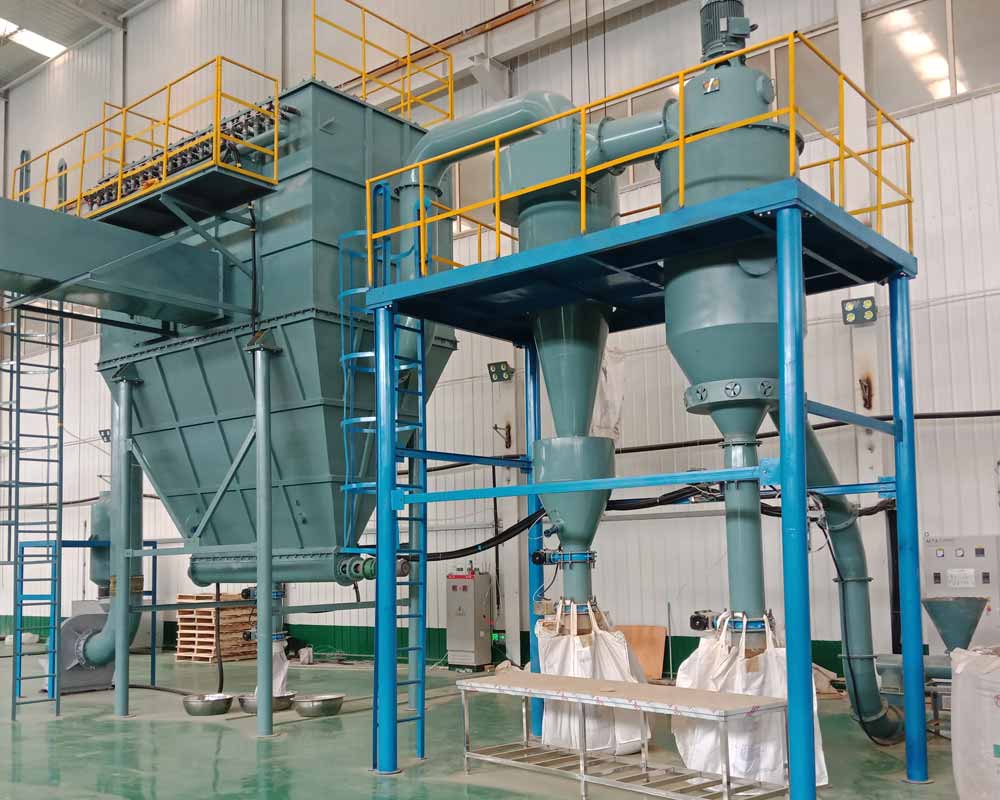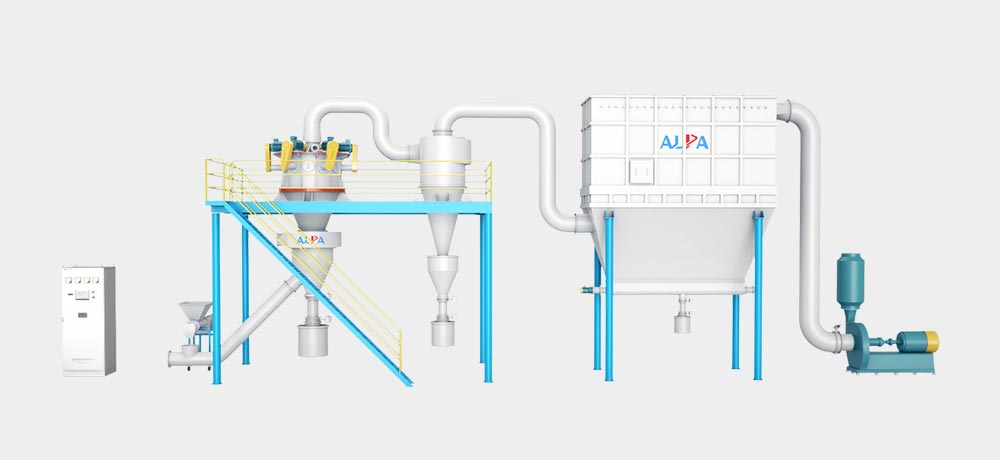Air classifier can be used to classify, break up and remove large particles
Airflow classifiers are widely used in chemical, mining, metallurgical and other industries and various dry powder materials to superfine, break up and remove large particles, and can classify spherical, flake and fibrous particles; suitable for chemical, mineral, and building materials , Electronics, pharmaceuticals, pesticides, coatings, dyes, metallurgy and other industries, can perform dry classification of various organic and inorganic substances.

The air current classifier is composed of a set of classification system with cyclone separator, dust collector and induced draft fan. The materials are first moved to the classification area from the inlet of the lower end of the air flow classifier under the suction of the fan, and then move to the classification area at a high speed with the ascending airflow. The gap of the classification wheel blade enters the cyclone separator or dust collector to collect, and the speed of the coarse particles entrained by the part of the fine particles hits the wall and disappears, and then descends along the cylinder wall to the secondary air outlet. The coarse and fine particles are separated, the fine particles rise to the classification zone for secondary classification, and the coarse particles fall to the discharge port for discharge.

Structural characteristics of air classifier:
(1) The air flow classifier is under the action of the high-speed rotating impeller with the jet fine particle ring. When the pressure of the gas flowing through the impeller rises, the high-pressure airflow will flow out of the impeller and pass through the jet fine particle ring. Curved shape, the airflow classifier has a large inlet cross-sectional area and a small outlet cross-sectional area, so the airflow pressure at the outlet is reduced, the speed increases, and it flows out in a rotating direction, which is conducive to classification.
(2) The adjustment mechanism of the air classifier is equipped with three adjustment rods, and a chain is used to keep it moving in synchronization. When the adjusting lever moves upward, the fine powder increases; when the adjusting lever moves downward, the fine powder decreases. The classification point can be continuously adjusted and the particle size of the classification product can reach D97: 3~150 microns. The air flow classifier is suitable for the fine classification of dry micron products.
(3) The control ring is equipped with a control ring to ensure that a suitable cross section is formed between the control ring and the injection fine particle ring, and the flow rate of the control airflow is stable.
(4) The residual air vent is avoided from the dry materials to bring in excess gas, and the temperature in the classification room is higher, and the air will expand, so a residual air vent is designed to keep the airflow in the classification room stable and balanced.
Application scope of air classifier:
1. The air flow classifier for high hardness materials is suitable for silicon carbide, various corundum, boron carbide, alumina, zirconia, garnet, zircon sand, diamond, etc.
2. In terms of non-metallic minerals, the air classifier is used for quartz, graphite, kaolin, calcium carbonate, mica, barite, mullite, medical stone, wollastonite, talc, pyrophyllite, etc.
3. In terms of chemical technology, aluminum hydroxide, silica gel, various dyes, epoxy resins, various additives, etc.
4. In terms of food, the jet mill is used for pollen, hawthorn, pearl powder, various vegetable powder, various Chinese herbal medicines, various cosmetics, antibiotics, etc.
5. In terms of metal materials, jet mills are also used for aluminum powder, magnesium powder, zinc powder, tin powder, copper powder, etc. Jet mills are also used in ceramic materials, refractory materials, electronic materials, magnetic materials, rare earth materials, phosphors, copy material powder, etc.
